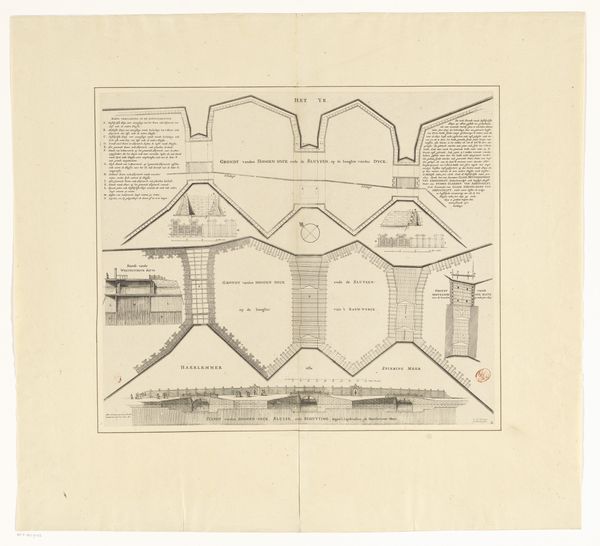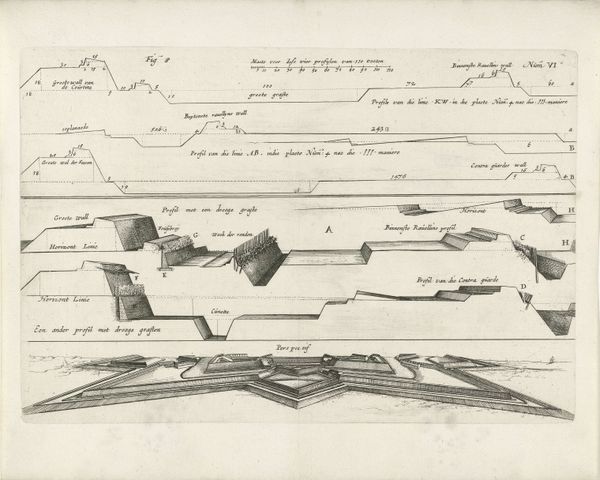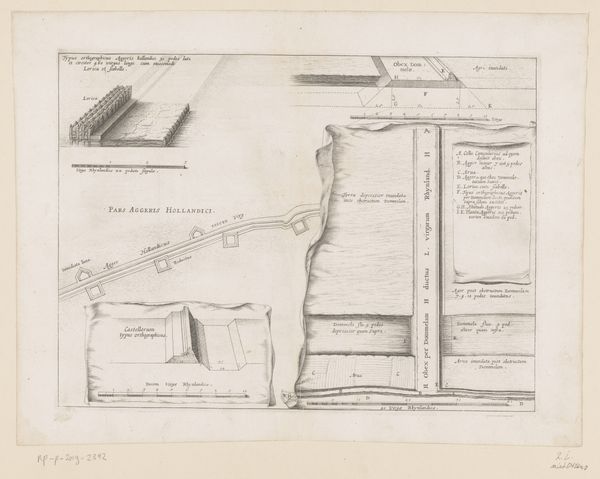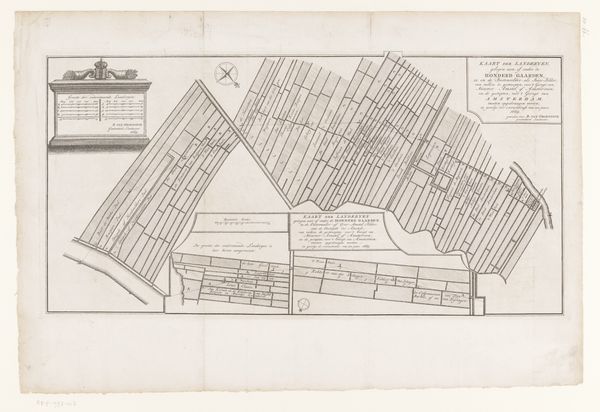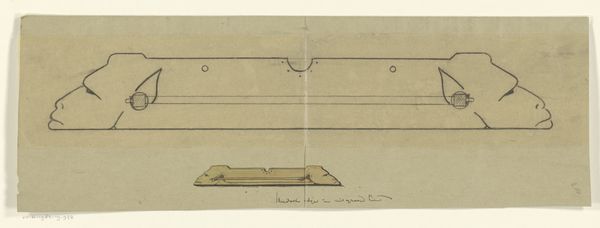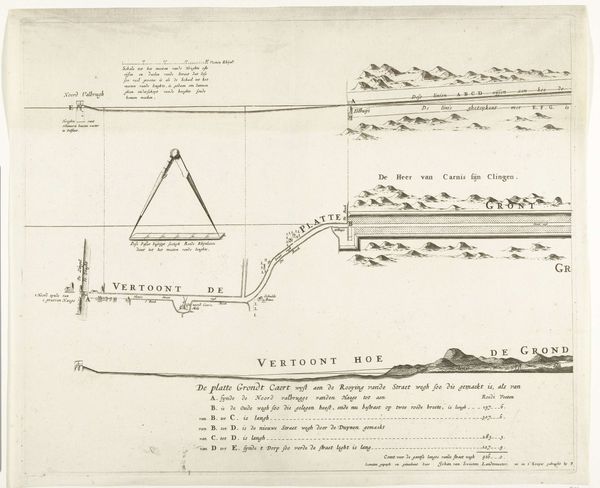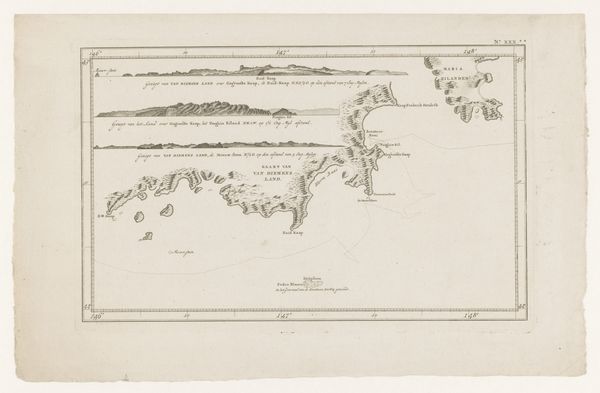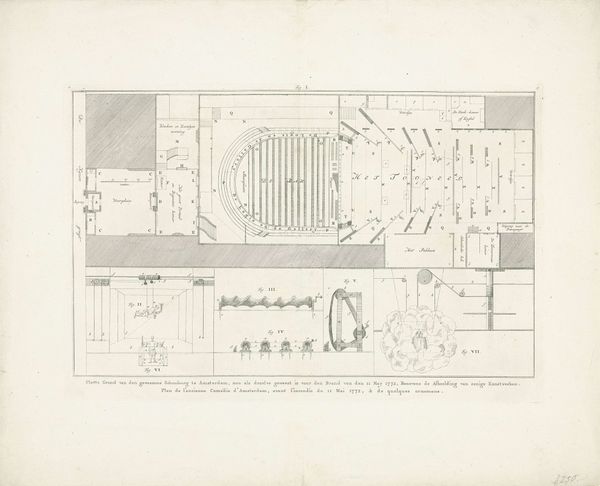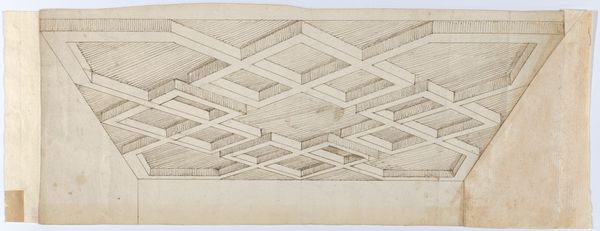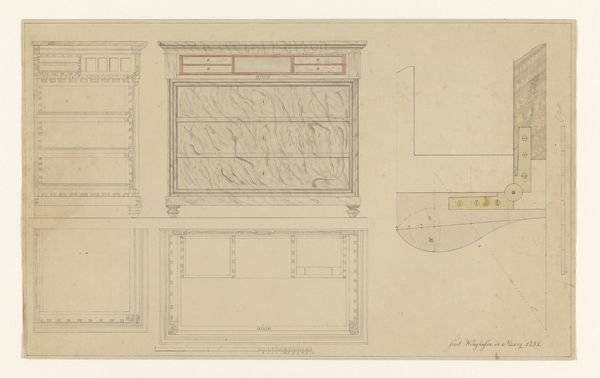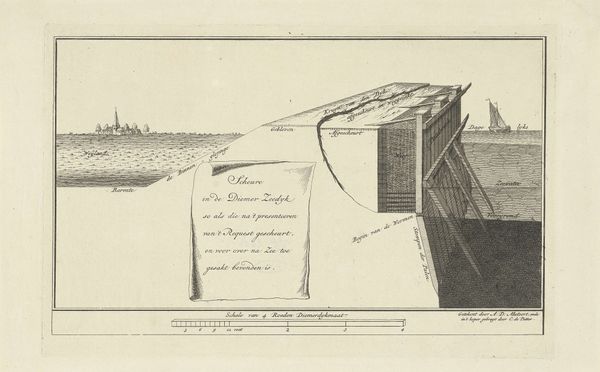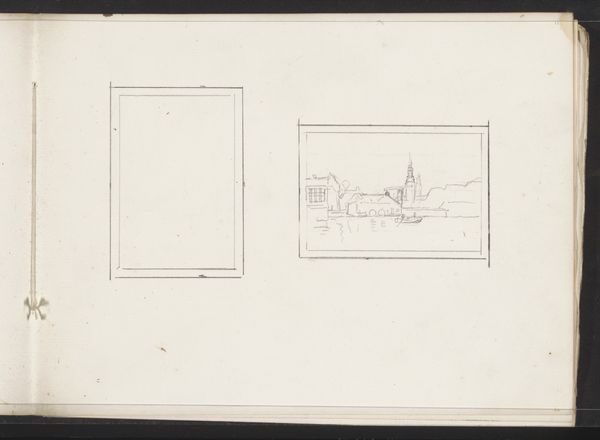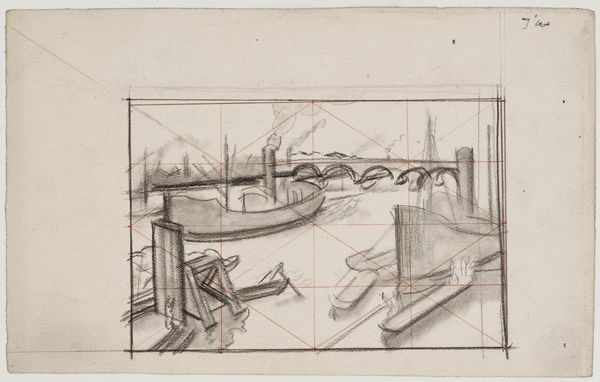
Profiel van de Diemerlanddijk en profiel van een ontwerp voor vernieuwing en versterking van de dijk 1729 - 1737
0:00
0:00
drawing, print, etching, paper, ink
#
drawing
#
baroque
# print
#
etching
#
landscape
#
etching
#
paper
#
ink
#
geometric
#
cityscape
Dimensions: height 262 mm, width 473 mm
Copyright: Rijks Museum: Open Domain
Curator: Here we have a fascinating print from the period of 1729 to 1737, titled "Profiel van de Diemerlanddijk en profiel van een ontwerp voor vernieuwing en versterking van de dijk"— or, "Profile of the Diemerland Dyke and profile of a design for the renovation and reinforcement of the dike". It’s attributed to Coenraad de Putter. Editor: It feels incredibly precise, almost architectural. The crisp lines and meticulous details, rendered in ink and etching on paper, convey a strong sense of intent and labor. It’s starkly functional. Curator: Indeed. This print isn't just aesthetically pleasing; it serves as a document of a crucial engineering undertaking. Consider the context: The Netherlands has always battled the sea. Images like these were vital in shaping public opinion and demonstrating the government’s commitment to protecting its citizens. Editor: Right, it’s about control. Look at the use of line. There’s an almost brutal demarcation of space—water, land, structure. And I find myself wondering about the artisans who would’ve translated this image, the skilled labor that transformed the artist's idea into the literal material substance of the dike. How were their livelihoods impacted by these designs? Curator: That’s a valid point. These kinds of prints circulated among elite circles – those who commissioned the work and benefited from such infrastructural projects. They visually reinforced a sense of order and progress, legitimizing investments and expertise in water management. Editor: The paper itself, the ink, the very act of etching… these materials speak of specialized knowledge and power. Were there other materials available? How did the available material dictate the design’s possibilities, as well as limit them? Curator: Absolutely. Etching allowed for the reproduction of detailed technical drawings, ensuring consistency across various sites. It offered a relatively efficient way to communicate complex information during a period without photography. This made designs scalable but did little to involve the workers' perspectives. Editor: It’s remarkable how an image primarily intended as a technical document can spark reflections on power, materials, and the shaping of our environment. It’s far from neutral. Curator: Exactly. And by considering the broader cultural and institutional landscape in which this image was produced, we begin to grasp its full significance. Thank you.
Comments
No comments
Be the first to comment and join the conversation on the ultimate creative platform.
